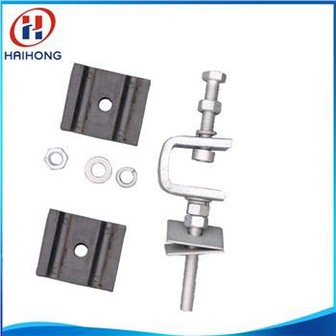What Are The Characteristics Of Seismic Resistant Fittings For Optical Cables?
As the cornerstone of modern communication networks, optical cables bear the important task of data transmission. In order to ensure the stable operation of optical cables in complex and ever-changing natural environments, especially in earthquake prone areas, the design and application of seismic resistant fittings for optical cables are particularly important. Seismic fittings can not only enhance the mechanical stability of optical cables, but also effectively resist the damage of natural disasters such as earthquakes to the optical cable system, thereby ensuring the continuity and reliability of communication. The following are several key characteristics and detailed explanations of optical cable seismic fittings:
1. Efficient vibration absorption capacity
The core of designing seismic resistant fittings for optical cables lies in their efficient vibration absorption mechanism. These fittings are usually made of special materials and structural designs, which can absorb and disperse energy through internal elastic components under earthquake or other external forces, reducing the vibration amplitude directly transmitted to the optical cable. This design can significantly reduce fatigue damage caused by long-term vibration of optical cables and extend their service life.
2. Flexible adaptability
Given the varying geological conditions and seismic intensity in different regions, high-quality optical cable seismic fittings need to have good environmental adaptability. This means that they can be adjusted and configured appropriately based on the specific conditions of the installation site, such as wind speed, terrain, soil type, etc., to ensure effective protection under various conditions.
3. Corrosion resistance and durability
Due to the fact that optical cable lines are often exposed to harsh outdoor environments, shock-absorbing fittings must have excellent corrosion resistance. They are usually made of corrosion-resistant materials, such as hot-dip galvanized steel, stainless steel, etc., to ensure that their performance will not be reduced due to corrosion during long-term use. In addition, these materials also need to have sufficient mechanical strength and weather resistance to resist extreme weather conditions, including high temperature, low temperature, humidity, and salt spray erosion.
4. Easy to install and maintain
Considering the complexity of cable laying and maintenance, the design of seismic fittings should focus on installation simplicity. This includes lightweight design, standardized interfaces, and easily adjustable fasteners, allowing technicians to quickly and accurately complete installation tasks while reducing maintenance costs and difficulties. A good identification system is also an important part, which can help maintenance personnel quickly identify and locate the position of hardware, and carry out necessary inspections or replacements.
5. Environmentally friendly
With the global emphasis on sustainable development, environmental protection has become a new trend in the design of seismic resistant fittings for optical cables. This means minimizing the impact on the environment throughout the entire lifecycle of production, use, and disposal. This may involve using recyclable materials, optimizing design to reduce material consumption, and ensuring that products can be safely recycled and disposed of after disposal.
In summary, the characteristics of optical cable seismic fittings are multifaceted, from efficient vibration absorption, flexible adaptability, corrosion resistance and durability, as well as easy installation and maintenance and environmental friendliness, each of which is an indispensable factor in ensuring the stable operation of the optical cable communication network. With the advancement of technology and the continuous improvement of communication quality requirements, the design and manufacturing of seismic fittings will continue to develop towards more efficient, intelligent, and environmentally friendly directions, contributing to the construction of a more reliable global information highway.







